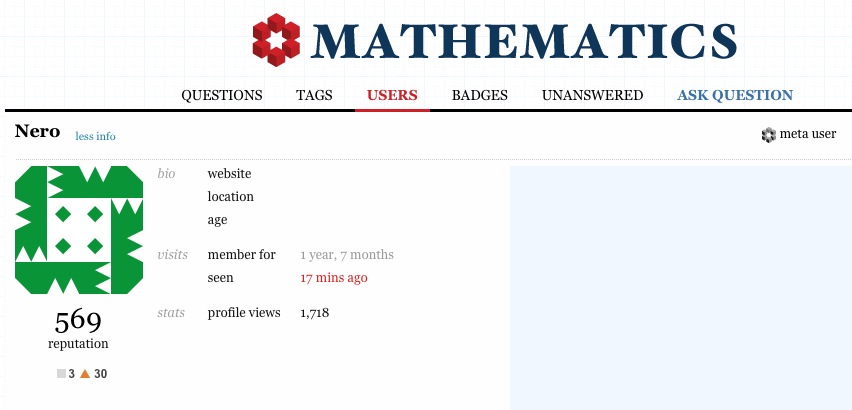Best explanation of ergodicity by Sinai.
“Suppose you want to buy a pair of shoes and you live in a house that has a shoe store. There are two different strategies: one is that you go to the store in your house every day to check out the shoes and eventually you find the best pair; another is to take your car and to spend a whole day searching for footwear all over town to find a place where they have the best shoes and you buy them immediately. The system is ergodic if the result of these two strategies is the same”
Monthly Archives: March 2015
Integrating Pareto tails across a shifted lognormal distribution
Friends, a first amendment discussion…
Friends, a first amendment discussion. To what extent can a person posting something on a U.S. social media while located in the U.S. be sued overseas for libel? There is the 2010 SPEECH Act preventing people from suing someone in the US if it violates his first amendment rights, but I wonder how protected we are.
This is a big deal because it would make U.S. social media a refuge of free-speech (it would be the London of Voltaire’s day).Now, by extension, how protected is someone in London expressing on U.S. social media something potentially libelous towards another London based person.
Please do not stray off-topic here with generalizations and keep security/surveillance matters outside this discussion. Thanks.
via Friends, a first amendment discussion. To what… – Nassim Nicholas Taleb.
Wilmott and Taleb seminar 12-13 March London
QUANTITATIVE RISK MANAGEMENT – IN THEORY AND IN PRACTICE
12-13 March 2015, London
- What is Risk?
- What are Fat Tails?
- The idea of fragility and how to measure it
- Size and scaling
- The law of large numbers in the real world
- What is complexity?
- How to price options using different distributions
- How to simulate fat tails
- How to measure model risk
- How not to measure model risk
- Sometimes it’s wrong to use probabilities
- The concept of delta-alpha
- The commonest quant mistakes
- The greeks that give you false hope
- Why calibration does not work
- The dangers of correlation
- The importance of nonlinearity
- Volatility nonsense
- What commonsense tells you about volatility, and turning that into a model
- Why simple models are often the best and why too much math can be dangerous
- A summary of what to do and where the real world is different
The URL for online payment is http://www.wilmott.com/seminar_wt.cfm
via Wilmott Forums – Wilmott and Taleb seminar 12-13 March London.
On the Super-Additivity and Estimation Biases of Quantile Contributions
On the Super-Additivity and Estimation Biases of Quantile Contributions
Nassim N Taleb, Raphael Douady
(Submitted on 8 May 2014 (v1), last revised 12 Nov 2014 (this version, v3))
Sample measures of top centile contributions to the total (concentration) are downward biased, unstable estimators, extremely sensitive to sample size and concave in accounting for large deviations. It makes them particularly unfit in domains with power law tails, especially for low values of the exponent. These estimators can vary over time and increase with the population size, as shown in this article, thus providing the illusion of structural changes in concentration. They are also inconsistent under aggregation and mixing distributions, as the weighted average of concentration measures for A and B will tend to be lower than that from A U B. In addition, it can be shown that under such fat tails, increases in the total sum need to be accompanied by increased sample size of the concentration measurement. We examine the estimation superadditivity and bias under homogeneous and mixed distributions.
pdf download
via [1405.1791] On the Super-Additivity and Estimation Biases of Quantile Contributions.
